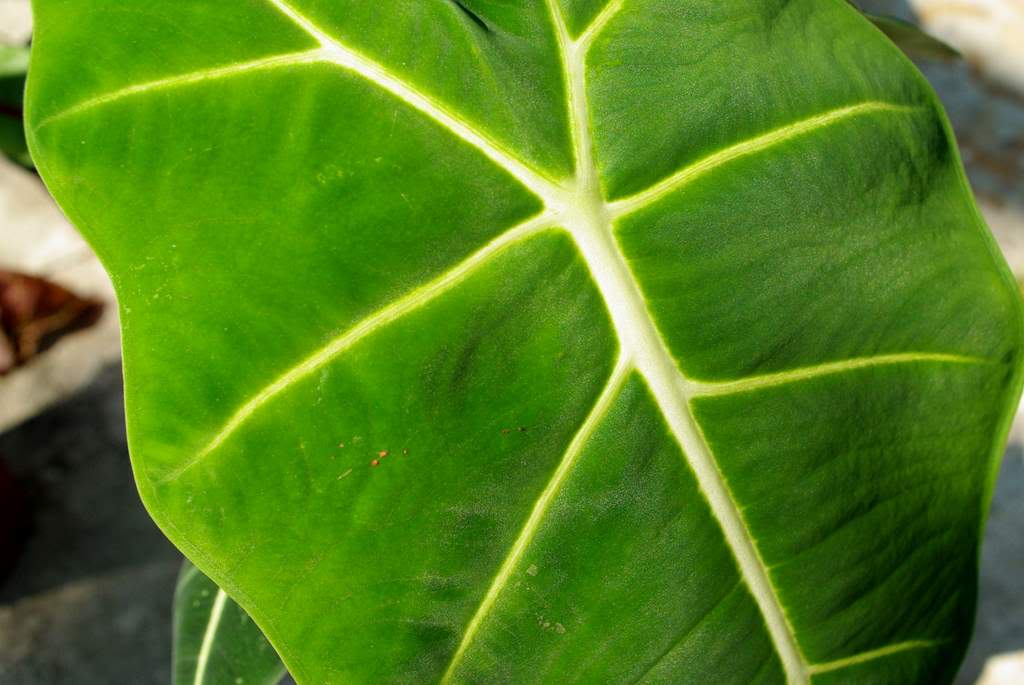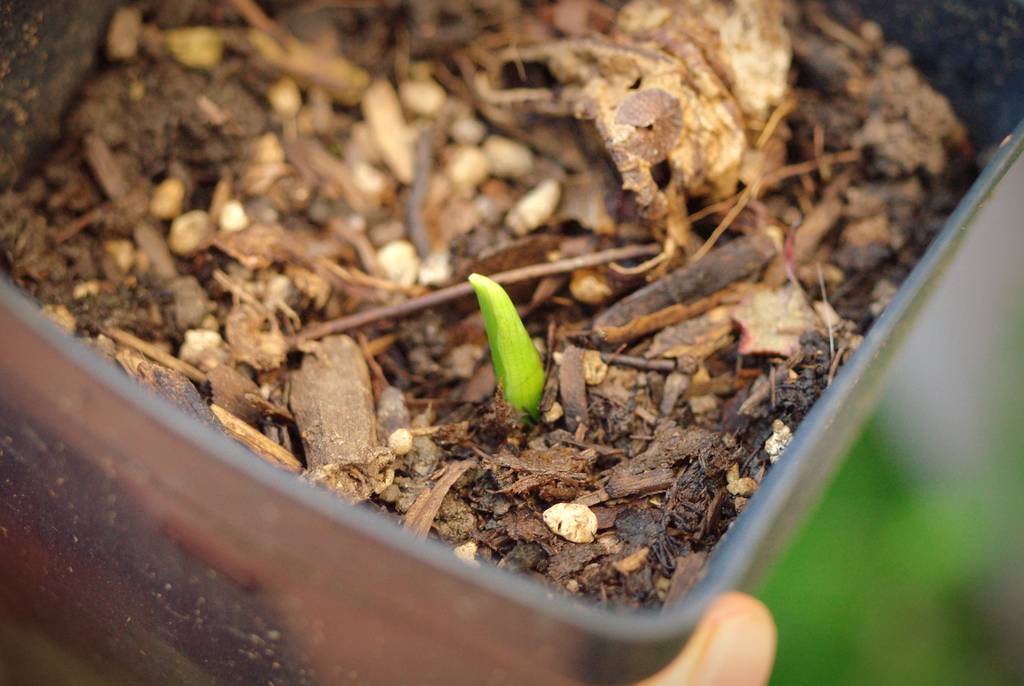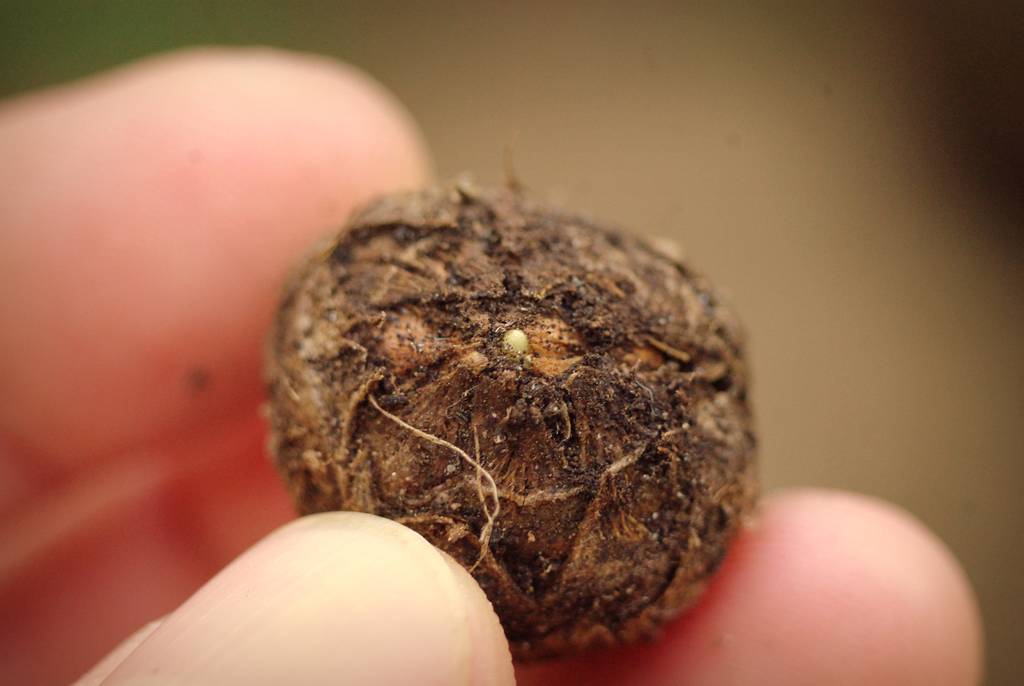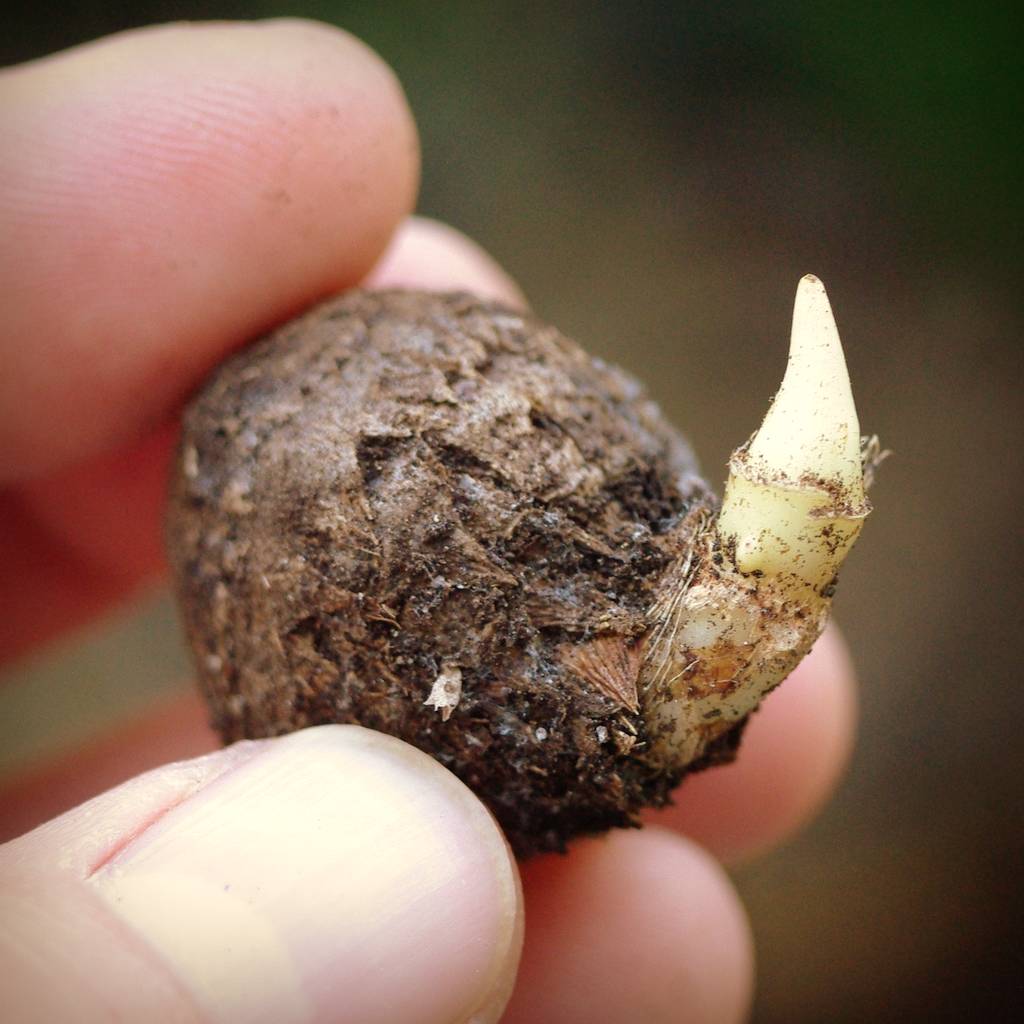The fact that I just got rid of 50-60 plants in a yard sale would help to reinforce that idea. The truth is, not everything goes well. There are repeated plumeria incidents, the grass failures, many elephant ear bulbs that don't make it, but sometimes I get a surprise.
Take for example Alocasia micholitziana 'Frydek', a smaller elephant ear with velvety green leaves and striking creamy veins. Here's a photo of the plant when I got it in 2010:
and here's another from 2011:
It's much nicer in person, as the leaves look so velvety. Very pretty!
I've brought this indoors and kept it alive as a houseplant before, but last winter I decided to treat it like some of the other elephant ears and see how it survived in the garage. Or maybe I left it outside a little too long and all of the leaves got freeze-damaged. I can't actually remember.
The point is, by the time that spring finally arrived, all I had left of this plant were the stems:
I wasn't overly concerned about this as they were still green and obviously had the capability to produce new growth -- the circular "eye" there is where it would emerge:
Plus there are visible "root bumps" around the stem. It seemed to me that I'd just have to put this into a pot and wait for it to grow.
I did this a couple of months ago (at least) with two of the smaller stems:
I may have put them out too early, but they're finally starting to show signs of growth:
The two stems I have yet to pot are longer than these that I potted, and I'm not sure exactly what to do with them. Do I stick them into the ground upright? It seems that there are at least three different spots along the length that would grow, so that would be a weird-looking plant if they all started growing. Do I bury the stem horizontally and see if all of the nodes grow? Do I cut the stem into multiple pieces and then bury?
I do have one full plant (the one in this post's first photo is quite small but grew from a bulb) and the two that are finally emerging -- although they don't have leaves yet. So with three plants, I almost feel comfortable experimenting with different planting methods for these larger stems. I don't know though, as these are the two biggest parts of the original plant and I don't want to "waste" them.
Luckily, as I dumped the soil from the original plant's pot yesterday, I got a surprise:
Offsets! Little baby corms (or are they tubers?) have been sitting in the dry, dry soil for months! There are more than just a couple of them too:
It's obvious that one of them got tired of waiting for me to do something with that pot (like water it or give it some warmth) and woke up:
I'll get these potted, and if every one of them grows I'll have almost 20 Alocasia 'Frydek' plants -- more than enough for me to experiment with the larger stems!
Although I'm very excited by this discovery because I really like this plant and miss having in in the garden right now, I'm also a little distressed...
...the thought of 20 more potted plants to care for is counter to my goal of getting the plants off my driveway.
Still though... NEW PLANTS!
.










Frydek is fantastic. However, I just don't seem to have any luck with it. Still, if you have any corms left the next time we do a plant trade, I'd love a couple :-).
ReplyDeleteI've planted all of them, so once they start coming up I'll send you some.
ReplyDeleteI think the key with Frydek is shade, shade, shade. I've also read that it doesn't like to have changing light conditions, as it would rather drop leaves than reorient them toward the light. So leave the pot in one spot and don't fiddle with it! (and then when the plant dies, make sure you don't throw away all of the corms)